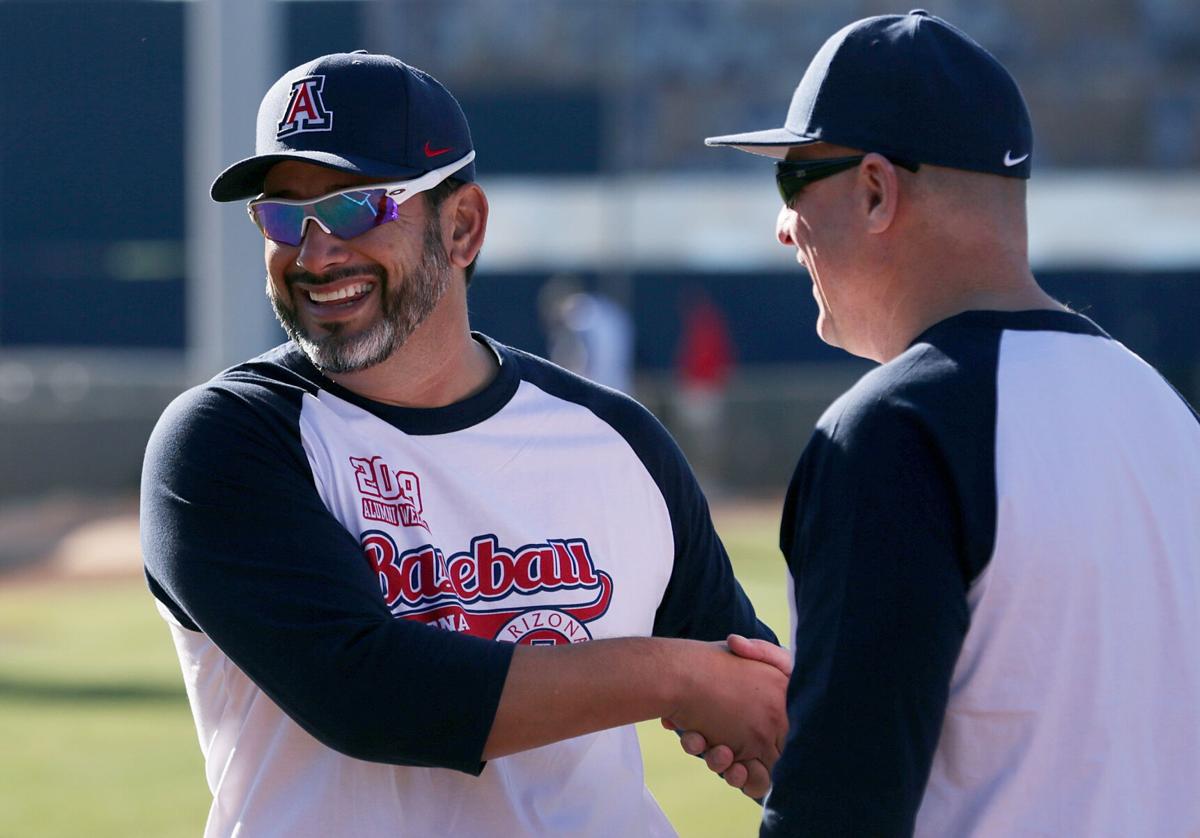Almost no one in Tucson sports from 1988-93 experienced more success than George Arias. Not Steve Kerr, not Sean Elliott, not Annika Sorenstam, not Tedy Bruschi.
See if you agree:
In the fall of 1988, Arias was a starting running back/punter as Pueblo High School blazed to a historic 10-0-1 regular season before losing in the state semifinals.
In the spring of 1989, Arias, a Pueblo shortstop, hit .447 to make the all-city baseball team.
In the spring of 1990, Arias hit .470 with a school-record 11 home runs to lead Pueblo to its only state baseball championship in history. He was the Star’s player of the year.
In the spring of 1991, Arias hit a school-record 17 home runs leading Pima College to No. 3 in the final NJCAA baseball poll, winning the ACCAC championship.
In the spring of 1992, Arias hit .407 for the Aztecs, leading coach Roger Werbylo’s team to the NJCAA championship game.
And in the spring of 1993, Arias, a first-team All-American third baseman for Arizona’s Jerry Kindall, hit a UA-record 23 home runs, leading the Wildcats to the final game of the NCAA regional finals.
Yet as you look back on Arias’ career as an amateur athlete, his Pueblo, Arizona and Pima College teams lost The Big Game in five of six seasons — none more painful the 1992 NJCAA championship game in Grand Junction, Colorado.
It was the one time in Arias’ amateur career that his team qualified as something of a Cinderella story. PCC squeezed into the final of four region playoff berths and then went on a three-week undefeated roll to play Essex County Community College of Maryland in the championship game.
Arias had hit home runs in four consecutive World Series games, extending his school career record to 31 homers. The San Francisco Giants drafted him and offered a five-figure signing bonus. But Arias declined, choosing to enroll at Arizona and, first, concentrate on winning the NJCAA championship.
Instead, the Aztecs lost.
“It was a remarkable season,” said Werbylo, who had coached Canyon del Oro High School to state baseball championships in 1979 and 1984. “We lost seven of our nine starters from the year before, when (ex-Rincon pitcher) Jason Jacome went 17-1 and everybody expected us to win it all. But we didn’t even get to the World Series.”
As an underdog in ’92, Pima beat the odds until the final game of the NJCAA season.
“Last year, we were awesome,” Arias said then. “A lot of people said this would be a sorry team, but it just shows what sticking together and refusing to give up can do.”

It wasn’t that the ’92 Aztecs were short on talent. Sophomore pitcher Marc Barcelo won 11 games and signed a scholarship offer from Arizona State, where he would go on to be selected the 1993 Pac-10 Pitcher of the Year before being drafted in the second round by the Minnesota Twins.
“We overcame some serious losses,” said Werbylo, whose team was devastated a month before the season when starting shortstop Ivan Galvez, a sophomore from Nogales, was killed in a car accident. Galvez had hit .410 in Pima’s ACCAC championship season of 1991.
Sahuaro High School’s Scott Foster hit .345 for the Aztecs of 1992; shortstop Chapo Hayes of Amphi High School hit .331. But it was Arias who made things click.
One of the most impressive moves of Arias’ baseball career was to connect with his mentor, Eddie Leon, a former Tucson High School and Arizona All-American shortstop, who in 1967 was the UA’s first-ever first-round draft pick.
To get eligible to enroll at Arizona for the ’93 season, Leon encouraged Arias to devote himself to academics. He attended summer school for eight weeks to become eligible to play for the Wildcats.
His career blossomed.
In his single season at Arizona, 1993, Arias hit .345 with a school-record 23 homers and 75 RBIs. He was named a first-team All-American by Collegiate Baseball magazine and, during one hot stretch, hit home runs in seven consecutive games, a Pac-12 record that still stands.

Roger Werbylo coached Pima College to the 1992 NJCAA title game.
Arias made his major-league debut with the Los Angeles Angels in 1996 but created a lifetime impact playing for the Orix Blue Wave, Hanshin Tigers and Yomiuri Giants of the Japanese big leagues; Arias hit 347 home runs in a combined eight years playing in Japan and Mexico before retiring in 2006.
He returned to Tucson, opened the Centerfield Baseball Academy, an indoor training facility, where he helped to develop more than 30 college baseball players, including Nick Gonzales of Cienega High School, the Pittsburgh Pirates’ No. 1 draft pick in 2000.
Not bad for a once-unknown football player from Pueblo High School, the son of Mexican immigrants who first gained attention in Tucson’s sports community 34 years ago by catching a touchdown pass to clinch the 1988 division championship game against Flowing Wells.
Today, Arias’ son, George Arias Jr., is a key relief pitcher for his father’s alma mater, which begins play in the NCAA Regionals on Saturday. The younger Arias will try to win The Big One the way his father did so often during his remarkable sports career.








